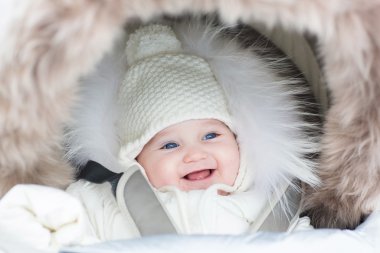
Body Temperature Regulation in Babies: An Essential Process for Their Well-Being
Share
The arrival of a baby into the family is one of the most exciting and precious moments in life. However, it also brings with it a number of responsibilities and concerns, especially related to their health and well-being. One of the crucial aspects that parents must learn to manage is the regulation of their little one’s body temperature. In this blog post, we will explore why it is important, how it works, and what you can do to ensure that your baby is always comfortable and safe.
Why is it important to regulate temperature?
Babies, especially newborns, have a limited ability to regulate their body temperature. Unlike adults, their nervous system and thermoregulatory mechanisms are still developing. This means that they are more susceptible to sudden changes in temperature, which can lead to conditions such as hypothermia (body temperature that is too low) or hyperthermia (body temperature that is too high). Both situations can be dangerous and require immediate attention.
How Temperature Regulation Works in Babies
The human body uses different mechanisms to maintain an adequate internal temperature, usually around 36.5ºC to 37.5ºC. In infants, some of these mechanisms include:
1. Vasodilation and Vasoconstriction: Like adults, babies can dilate or constrict blood vessels to regulate blood flow and, consequently, heat loss. However, this process is not as effective in newborns.
2. Thermogenesis: Babies generate heat mainly through brown adipose tissue, which is a type of fat responsible for producing heat in response to cold.
3. Behavior: Babies may seek proximity to the parent's body or move slightly to find a more comfortable position.
Tips for Maintaining the Right Temperature
Now that we understand how babies regulate their temperature, here are some practical tips to help keep your little one comfortable:
1. Clothing: Dress your baby in light layers. Choose natural fabrics like cotton, which allow for breathability and are gentle on the skin. Avoid overly tight clothing that can restrict circulation.
2. Environmental Control: Keep your baby's room at a comfortable temperature. An ideal range is usually between 20ºC and 22ºC. Use a thermometer to monitor the climate in your baby's room.
3. Active Monitoring: Use a digital thermometer to monitor your baby's temperature if you feel he or she is hotter or colder than usual. Pay attention to signs such as sweating, cold or flushed skin, and act quickly if you notice anything unusual.
4. Avoid Overheating: Overheating is a risk factor for sudden infant death syndrome (SIDS). Make sure your baby is not overdressed, especially when sleeping.
5. Bathe with Care: When you give your cat a bath, make sure the water is lukewarm and never hot. After bathing, wrap your cat in a soft towel so that he doesn't lose heat quickly.
Body temperature regulation in babies is an essential aspect that all parents should consider and learn to manage. By being attentive to your little one's cues and following the tips mentioned above, you can help ensure their comfort and well-being. Always remember that your parental instinct is your best ally, so don't hesitate to consult a specialist if you have any doubts about your baby's temperature. Raising a little one with love and care is the best way to start this wonderful adventure!

